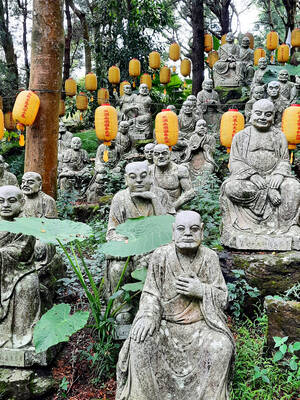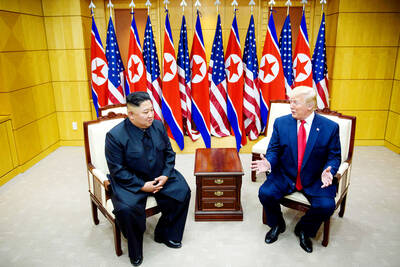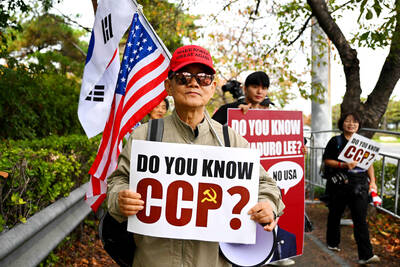1. Harry Potter and the Sorcerer's Stone (
By J.K. Rowling
Translated by Peng Chien-wen (
Mysterious letters lead the 11-year-old Harry Potter into a kingdom of sorcerers, who send their mail by owl messengers and travel on brooms.
2. Harry Potter and the Prisoner of Ezkaban (
By J.K. Rowling
Translated by Peng Chien-wen (
The action begins in this third episode of the Harry Potter series when the young wizard "accidentally" causes the dreadful Aunt Marge to inflate like a balloon and float to the ceiling. Fearing punishment, Harry lunges out into the darkness with his trunk and his owl, Hedwig, beginning a journey that will have children and adults cheering.
3. Harry Potter II (哈利波特 II)
By J.K. Rowling
Translated by Peng Chien-wen (彭倩文)
The long summer vacation has finally ended and Harry Potter can't wait to go back to magic school. But a string of strange and terrifying things begin to happen, and Harry must find the culprit behind them.
4. Quidditch through the Ages; Fantastic Beasts and Where to Find Them
(
By J.K. Rowling
For all fans of Harry Potter, Quidditch through the Ages is the reference book that Harry Potter borrows from the school library; Fantastic Beasts and Where to Find Them is the assigned textbook for all first graders at at Harry's school, Hogwarts.
5. Mistletoe (懈寄生)
By Tsai Chih-heng (蔡智恆)
A 120,000-character novel about how a research assistant makes a choice between two girls.
6. The Bible of Reincarnation: Part I (葬書: 上)
By Carmelita Chao (趙慧娟)
A mystical novel from the Hong Kong-born teacher of meditation who spent much of her life in Taiwan and is now based in the San Francisco area.
7. Wisdom from Aesop's Fables (索寓言的智慧)
Translated and revised by Liu Yi-chun (劉怡君)
A collection of 120 stories translated from Aesop's Fables. The English versions of the stories are also included.
8. Going Left, Going Right (向左走*向右走)
By Jimmy (幾米)
One in Jimmy's popular series of cartoon sketches and literary musings.
9. Love in the Moonlight (
By Wu Ruo-chuan (吳若權)
Another book from one of Taiwan's best-selling essayists on life.
10. Harvard Girl -- Liu Yiting (哈佛女孩劉亦婷)
By Liu Weihua and Zhang Xinwu (劉衛華, 張欣武)
A book dedicated to all parents who love their children. Liu Yiting was awarded scholarships to four famous US universities and has become the new idea student in China. Liu's parents, influenced by the book, Early Education and Genius, describe how they educated their daughter.
11. The Toast Boy's Kiss (吐司男之吻)
By Chi Hsi-lin (齊錫麟)
A love story adopted from a popular TV series about a high school girl who falls in love with a gangster's son in a summer.
12. Lost Souls and Fallen Spirits (失魂落魄)
By Carmelita Chao (趙慧娟)
Another mystical novel from the Hong Kong-born meditation teacher in discussing "karma" -- which regards the doctrine of fate as the inflexible result of cause and effect.
13. Lady! Don't Be Angry (小姐小姐別生氣)
By Liu Yung (劉墉)
One of Taiwan's best-selling essayists tells you all the things a girl should know.
14. Lonesome Like You (妳,這樣寂寞)
By Tsai Shih-pin (蔡詩萍)
The author, editor in chief of the United Evening News, tries to analyze lonely women from the male perspective.
15. A Message from the Spiritual World (靈界訊息)
By Carmelita Chao (趙慧娟)
A novel about the mysteries of love and life, with a focus on a cursed female journalist's horrifying story.
16. Say it to Your Heart (把話說到心窩裡)
By Liu Yung (劉墉)
A meditation by the maestro of inspirational books -- this time about speech and the right ways to express oneself, as the famous New York-based essayist teaches you the art of speaking through vivid stories and examples.
17. The Moon Has Forgotten (月亮忘記了)
By Jimmy (幾米)
Another one in Jimmy's popular series of cartoon sketches and literary musings, which tells the story of a lonely boy.
18. This is My Answer (這是我的答案)
By Teng Ching-shu (藤井樹)
A male university student meets a girl with beautiful, long hair and a sweet voice in a bookstore. He wants to turn the precious, short encounter into an everlasting love story.
19. Early Education and Genius (早期教育與天才)
By Kimura, Kuichi (木村久一)
Translated by Chen Hui-li (陳惠莉)
The book, first published by the Japanese author in 1916, advocates the importance of early education for a child.
20. The Bible of Reincarnation, Part II (葬書: 下)
By Carmelita Chao (趙慧娟)
The second installment from the Hong Kong-born meditation teacher.
-- Kingstone Books

When Taiwan was battered by storms this summer, the only crumb of comfort I could take was knowing that some advice I’d drafted several weeks earlier had been correct. Regarding the Southern Cross-Island Highway (南橫公路), a spectacular high-elevation route connecting Taiwan’s southwest with the country’s southeast, I’d written: “The precarious existence of this road cannot be overstated; those hoping to drive or ride all the way across should have a backup plan.” As this article was going to press, the middle section of the highway, between Meishankou (梅山口) in Kaohsiung and Siangyang (向陽) in Taitung County, was still closed to outsiders

President William Lai (賴清德) has championed Taiwan as an “AI Island” — an artificial intelligence (AI) hub powering the global tech economy. But without major shifts in talent, funding and strategic direction, this vision risks becoming a static fortress: indispensable, yet immobile and vulnerable. It’s time to reframe Taiwan’s ambition. Time to move from a resource-rich AI island to an AI Armada. Why change metaphors? Because choosing the right metaphor shapes both understanding and strategy. The “AI Island” frames our national ambition as a static fortress that, while valuable, is still vulnerable and reactive. Shifting our metaphor to an “AI Armada”

US President Donald Trump may have hoped for an impromptu talk with his old friend Kim Jong-un during a recent trip to Asia, but analysts say the increasingly emboldened North Korean despot had few good reasons to join the photo-op. Trump sent repeated overtures to Kim during his barnstorming tour of Asia, saying he was “100 percent” open to a meeting and even bucking decades of US policy by conceding that North Korea was “sort of a nuclear power.” But Pyongyang kept mum on the invitation, instead firing off missiles and sending its foreign minister to Russia and Belarus, with whom it

The Chinese Communist Party (CCP) has a dystopian, radical and dangerous conception of itself. Few are aware of this very fundamental difference between how they view power and how the rest of the world does. Even those of us who have lived in China sometimes fall back into the trap of viewing it through the lens of the power relationships common throughout the rest of the world, instead of understanding the CCP as it conceives of itself. Broadly speaking, the concepts of the people, race, culture, civilization, nation, government and religion are separate, though often overlapping and intertwined. A government